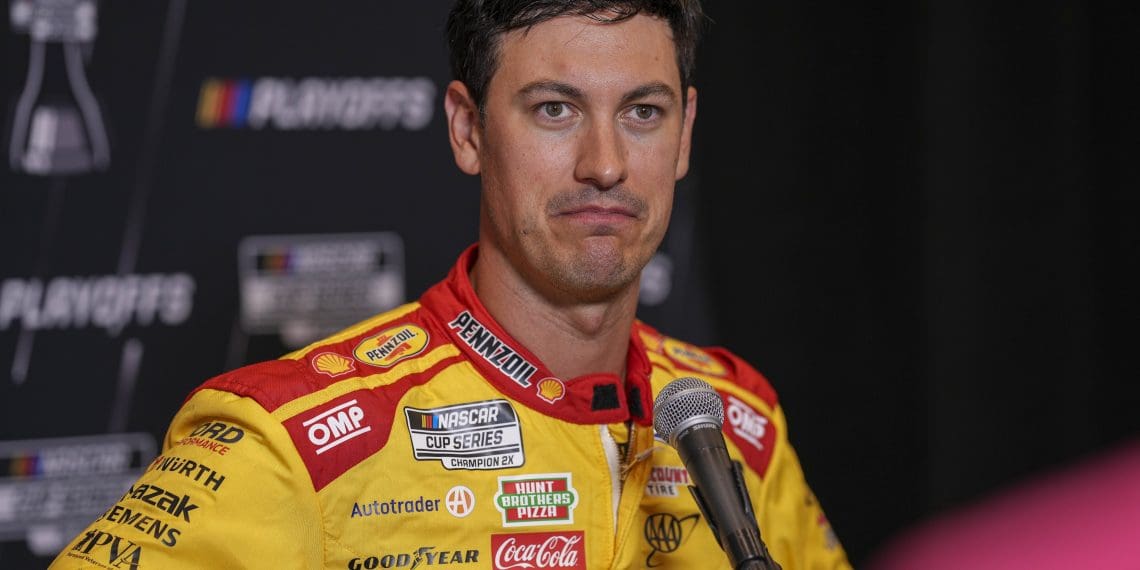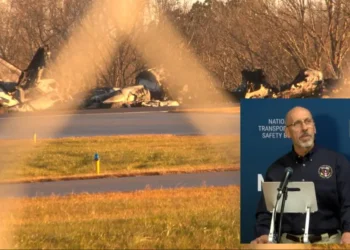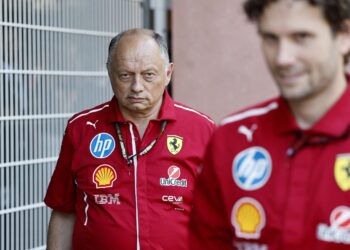The NASCAR Cup Series playoff race at Talladega last Sunday lived up to its chaotic reputation, delivering a massive 28-car wreck that left the field in disarray. While fingers quickly pointed at various drivers, particularly Brad Keselowski, Team Penske veteran Joey Logano has come forward to defend his former teammate, insisting that no one is to blame for the crash.
Logano’s Take: Aggression, Not Blame
The incident, which saw Keselowski’s No. 6 RFK Racing Ford getting a shove from behind, triggered a sequence of events that led to a multi-car wreck involving Austin Cindric’s No. 2 Penske Ford. The chaos that ensued collected nearly half the field, sparking a wave of backlash against Keselowski. However, Logano, a two-time Cup champion himself, was quick to set the record straight.
“Everyone gets more aggressive at the end of the races,” Logano explained. “The No. 2 got out there a little bit more than what he has been, and the No. 21 [Harrison Burton] gave me a shove, and that transferred to the No. 6. It got to the No. 2 with a fair amount of steam.”
Logano emphasized that Keselowski was simply a victim of circumstance and aggressive racing—common elements at superspeedways like Talladega. “It was not his fault, it was not Brad’s fault. It was not anybody’s fault. Just a product of racing. It was getting more and more aggressive as the laps went down. It happens.”
The Challenge of Superspeedway Racing with the Next-Gen Car
Superspeedway racing has always been unpredictable, but Logano noted that the current generation of cars adds an extra layer of complexity. Reflecting on his own experience during the race, he admitted he was at a loss over how to navigate such tracks with the new cars, highlighting the challenge drivers face when the pack becomes increasingly aggressive in the closing laps.
Logano also criticized NASCAR’s Damage Vehicle Policy (DVP) towing process, calling it “comical” and suggesting that the system needs refinement to prevent similar issues in the future.
Logano’s Miscalculation and Playoff Impact
Despite not being in a position to contend for the win, Logano believed he had positioned himself well enough for a strong finish—potentially a top-five result. “I felt like I was in a good enough spot to where I could get a top-five, and if they started crossing each other up coming to the checkered, I was on the bottom, and things were going to work fairly well for us. I actually thought the bottom was the safest place to be, but [Cindric] got sideways, and there I was.”
Unfortunately, Logano’s calculated strategy unraveled as Cindric spun into the bottom lane, ruining Logano’s race and putting his playoff hopes in jeopardy. Now sitting on the playoff bubble, Logano must secure either a victory or a top-five finish, maximizing stage points at next week’s race at the Roval, to stay alive in the championship hunt.
Logano’s Perspective: No Pointing Fingers, Just Racing
Logano’s stance underscores the reality of superspeedway racing—accidents are often unavoidable products of the high-speed, close-quarters racing style that Talladega demands. While some may seek to assign blame, Logano sees these incidents as intrinsic to the sport.
As Logano fights to keep his playoff hopes alive, his perspective reminds fans and competitors alike that, in the world of NASCAR, sometimes it’s just racing. No fault, no blame—just the high-stakes, high-speed drama that comes with the territory.










